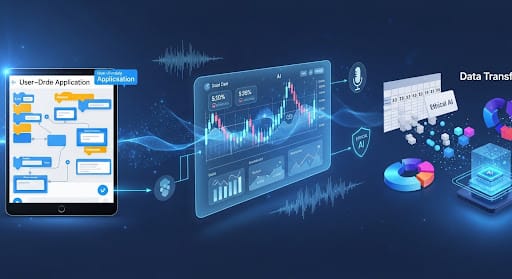How to Drastically Improve AI & Coding Education in 2025 — 7 Smart Strategies That Actually Work
Teaching students how to code or work with AI is no longer as simple as walking them through a few functions and loops. In 2025, attention spans are shorter, technologies are evolving faster, and student expectations are way higher.
Whether you're running a bootcamp, teaching at a college, or mentoring online, here are 7 powerful ways to improve your teaching outcomes and help students actually retain and apply what you’re teaching.
1. 🔁Ditch Static Content — Make It Interactive (In Real-Time)
If you're still relying solely on video lectures and slides, it’s time to level up.
Students learn best when they can interact with the material as it’s being taught. Think:
- Live coding sessions
- Real-time challenges during class
- Side-by-side walkthroughs where students can code along
Interactivity isn’t a bonus anymore — it’s a necessity.
2. 👀 Let Students Follow Along As You Teach — Literally
Imagine teaching conditionals or prompt engineering and being able to see in real-time which student is struggling, who’s experimenting, and who’s just stuck.
This isn’t a dream scenario — it’s possible with tools that show a read-only view of each student’s editor, so you can guide them without disrupting their flow.
Bonus: It helps you address common misunderstandings before they snowball into confusion.
3. 💬 Use Group & Individual Chats to Bridge Gaps Instantly
Sometimes a student is too shy to ask a question in class.
Sometimes you want to nudge one student without interrupting the entire session.
Private chat and group threads during live sessions make this super smooth:
- Solve doubts instantly
- Share resources without breaking rhythm
- Foster mini peer-to-peer conversations
Communication builds confidence — especially in early learners.
4. 🤝 Build In Real-Time Collaboration (Like Pair Programming 2.0)
Want your students to understand what teamwork in tech really feels like?
Set them up in:
- Breakout rooms for quick challenges
- Group projects with defined roles
- Live problem-solving games during class
This mimics real dev culture — and keeps energy high even during dense topics.
5. 📊 Track Student Progress With Live Analytics
No more waiting for end-of-week quizzes or feedback forms.
With real-time analytics dashboards, you can:
- Monitor engagement during sessions
- Spot students who are falling behind
- Identify which concepts trip them up most
It’s like X-ray vision for educators — but friendlier.
6. ⚙️ Integrate AI Support — Without Letting It Do the Teaching
AI shouldn't replace you. It should support you.
You can now use AI-based editors that:
- Suggest error corrections while students type
- Help debug logic and syntax in real time
- Offer autocomplete for structured formats like JSON or YAML
Students get unstuck faster. You get to focus on teaching concepts, not fixing typos.
7. 📋 Use Live Polls & Quick Quizzes to Check Understanding
Forget boring pop quizzes. Instead, try:
- Real-time polls on tricky concepts
- Lightning-round questions after every 15–20 minutes
- Mini “Choose the Best Prompt” games
It makes the session interactive and gives you valuable feedback on student understanding — instantly.
(PS: This works even better with anonymous responses. Students feel safer answering honestly.)
So… Where Do You Start?
The good news?
You don’t need to build this infrastructure from scratch.
There are platforms out there that combine live teaching, code sharing, AI assistance, student analytics, group work, and real-time feedback into one smooth experience.
If you’re serious about upgrading your teaching in the AI era — especially for coding, GenAI, prompt engineering, or LLM-based projects — it’s time to explore smarter, more engaging tools.
One such platform that does all of this (and more) is Vidvatta — designed by educators, for educators.
Whether you’re mentoring beginners or teaching advanced AI workflows, it’s built to make your job easier — and your students’ learning deeper.
While many platforms offer live coding classes or bootcamps (Coding Blocks, CodeChef labs, The Hacking School), and some cater to younger learners or regional languages (GUVI, Tekie, Ebodhi), none combine:
- Live mentor-led, AI-powered sessions
- Advanced GenAI curriculum
- Educator-centric features and workflow analytics
That’s where Vidvatta shines — standing apart as a forward-thinking platform for modern, live, AI-enhanced coding education.
Want to improve your AI or coding classroom experience? Discover 7 effective strategies — from live collaboration and AI-powered feedback to real-time analytics — that boost student success and make tech education work in 2025.


